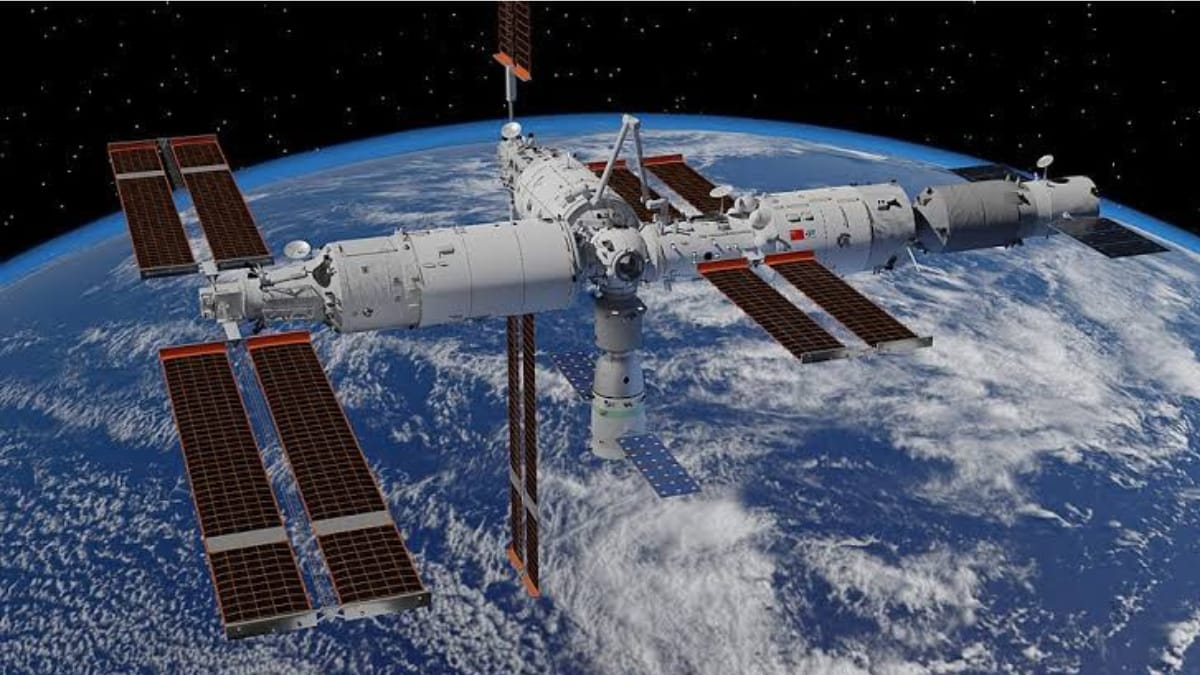China has manifested its intentions to expand its self-built space station, named Tiangong, to six modules from three very soon. China is actively putting its best efforts to ace the global space power race, by giving tough competition to the USA.
The aforementioned plan was announced by CAST (China Academy of Space Technology), at the 74th International Astronautical Congress. Zhang Qiao, a lead designer at CAST, stated at the event that China intends to increase the size of its Tiangong ( which means ‘Heavenly Palace’) space station from three to six modules in the upcoming years.
International Astronautical Congress:
The International Astronautical Congress (IAC) is like a big yearly meeting where people from all over the world talk about space. It started in 1950 and is organized by the International Astronautical Federation (IAF). At the IAC, experts and space fans come together to discuss the latest things happening in space exploration and technology.
The recently concluded International Astronautical Congress (IAC) (2-6 October) stood as a pivotal assembly, having united global stakeholders to collectively address challenges and explore the potential of space for the betterment of humanity. Over 5000 participants joined the IAC 2023 which was convened in Baku, the capital of Azerbaijan.
Modular Progression: Building Tiangong
This mission has been carried out in modules. In 2021, the first module was launched which was named Tianhe, meaning ‘Harmony of the Heavens’. The following year, in 2022, the second module named Wentian ( meaning ‘Quest for the heavens’) was launched into space. Tiangong is the third module which is currently fully operational.
Tiangong is about 25% the size of the ISS (International Space Station), launched by NASA. Tiangong is hosted at an altitude of 450 kilometers from the Earth, with a maximum capacity of three astronauts. Even after its expansion, as promised by China, it will remain at 40% International Space Station’s mass, if compared.
Future Endeavors: Aiming for Global Space Power
China is set to launch the next module at the same time when ISS is supposed to retire i.e. in 2030. It will be the best alternative platform for other countries to send their astronauts for near-Earth missions. This mission is an opportunity for China to become a ‘Global Space Power’, and the world knows about the evident thirst of China to become the global leader in all terms.
International Space Station:
ISS, launched in 1998, is a multinational collaborative project involving space agencies such as NASA (United States), Roscosmos (Russia), ESA (European Space Agency), JAXA (Japan Aerospace Exploration Agency), and CSA (Canadian Space Agency). It has been for around 24 years in space and will supposedly retire in 2030. Around 200+ astronauts have visited ISS till now.
The ISS is like a floating science lab in space! It travels around the Earth, and astronauts from different countries live and work there. It’s a symbol of global cooperation in space exploration. It revolves around the Earth at approx 28000 km/hr speed.
China’s Chang’e-8 Moon Mission:
China also announced its exemplary lunar mission, Chang’e-8, to be launched in 2028 on October 2, 2023. It has invited different countries to contribute to the equipment that will be carried to the space mission. Wang Qiong, Mission’s deputy chief designer, mentioned that the payload of the craft will be around 200kg.
China is experimenting with a new idea of launching the equipment from different locations and operating them separately in their individual countries. However, there will be interaction among the spacecraft, once launched in space!
China’s next lunar mission will be launched next year only i.e. Chang’e-6. This mission will potentially carry about 20kg of equipment from other nations like France, Sweden, Italy, and Pakistan. If it succeeds, it will be the benchmark-setting mission, to gather and return samples from the unexplored side of the moon.
